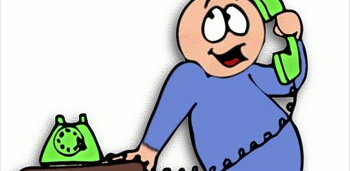
Include a call to action.
If you want to make money with your podcast, you must include a call to action. It seems logical. However, many podcasters believe, “If I build it, they will come.” It simply doesn’t happen that way.
Odd as it may sound, your podcast probably isn’t your product. Unless you are charging for your podcast, your show is only the marketing vehicle for some other product. Most podcasts are free. The show itself isn’t generating revenue. You need to create another product you can sell.
In his book “Free: The Future of a Radical Price”, Chris Anderson lists many ways to create revenue using the power of free. Many of these can be used to generate revenue from your podcast.
Some think access to the audience can be sold to advertisers as if it were traditional broadcasting. Unfortunately, audiences are not typically large enough for this model. Listeners also do not expect the traditional twelve minutes of commercials within their favorite podcast hour. Advertising is usually a very difficult path to revenue.
To generate revenue with your podcast, you need to create something else to sell.
You could make money by making your podcast a small portion of a larger show, which is available to paid members only. The free podcast becomes marketing for the member content.
You could turn your knowledge of some “how to” subject into a book, e-book, study course or other product. Your podcast could be the “why” behind your philosophy. The show would then promote the “how” that your listener will learn when they purchase the product.
There are many other ideas described in Anderson’s book. You could give away the product while charging for the service, such as consulting or coaching. Give away the content while making money referring people to retailers, like affiliate marketing. Rather than traditional advertising, you could give away the content while charging advertisers to be featured in it, similar to The Home Shopping Network. You could even take a cut of sales. You could podcast generic advice while selling specific, customized advice. There are fifty ideas in the book. To make money with your podcast, I suggest you give the book (or at least that section) a read.
If you build it, they may come. However, that doesn’t necessarily mean you will become instantly wealthy. You need to create something to sell. You need to tell your listener to buy. Then, you need to show them the way. If you desire to make money with your podcast, make sure your podcast includes the call to action.





